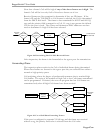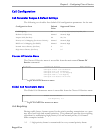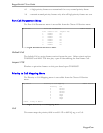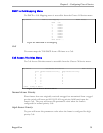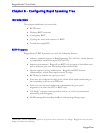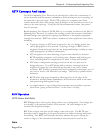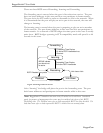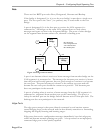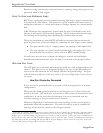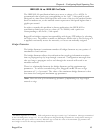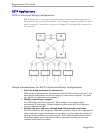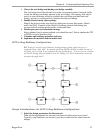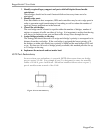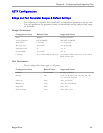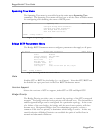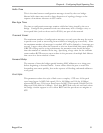
RuggedSwitch™ User Guide
Because an edge port services only end stations, topology change messages are not
generated when its link toggles.
Point To Point and Multipoint Links
RSTP uses a peer-peer protocol called Proposing-Agreeing to ensure transitioning
in the event of a link failure. This protocol is point to point and breaks down in
multipoint situations, i.e. when more than two bridges operate on a shared media
link.
If RSTP detects this circumstance (based upon the port’s half duplex state after
link up) it will switch off Proposing-Agreeing. The port must transition through
the learning and forwarding states spending the forward delay in each.
There are circumstances where RSTP will make an incorrect decision about the
point-to-point state of the link simply by examining the half duplex status, namely:
• The port attaches only to a single partner, but through a half duplex link.
• The port attaches to a shared media hub through a full duplex link. The
shared media link attaches to more than one RSTP enabled bridge.
In such cases the user may configure the bridge to override the half duplex
determination mechanism and force the link to be treated in the proper fashion.
Path And Port Costs
The STP path cost is the main mechanism by which root and designated ports are
chosen.
2
The path cost for a designated bridge is the sum of the individual port
costs on the links between the root bridge and that designated bridge. The port
with the lowest path cost is the best route to the root bridge and is chosen as the
root port.
How Port Costs Are Generated
Port costs can be generated either as a result of link autonegotiation or manual
configuration.
When the link autonegotiation method is used the port cost is derived from the
speed of the link. This method is useful when a well-connected network has been
established. It can be used when the designer is not too concerned with the
resultant topology as long as connectivity is assured.
Manual configuration is useful when the exact topology of the network must be
predictable under all circumstances. The path cost can be used to establish the
topology of the network exactly as the designer intends.
2
In actuality the primary determinant for root port selection is the root bridge ID. Bridge ID is important mainly
at the network startup when the bridge with the lowest id is elected as the root bridge. After startup (when all
bridges agree on the root bridge’s id) the path cost is used to select root ports. If the path costs of candidates for
the root port are the same, the ID of the peer bridge is used to select the port. Finally, if candidate root ports have
the same path cost and peer bridge ID, the port ID of the peer bridge is used to select the root port. In all cases
the lower ID, path cost or port ID is selected as the best.
RuggedCom



